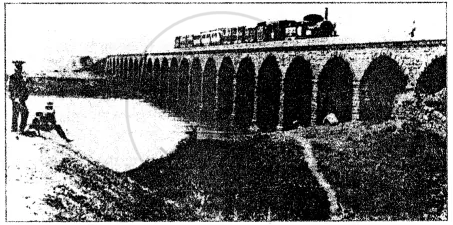Advertisements
Advertisements
Question
Answer the following question briefly:
In the context of Permanent Settlement of Bengal answer the following:
Briefly describe its disadvantages
Solution
Disadvantages
- The cultivators were left at the mercy of the zamindar, who exploited and oppressed them, increased their rents, and evicted them from the land when they unable to pay the high rents. This led to widespread poverty and misery of the cultivators.
- Since the revenue was fixed, the government would not get a share of increasing returns to form the land.
- This system gave rise to a class of absentee landlords. These zamindars preferred to live in cities and towns and sublet then- land to tenants at high rates. These tenants in turn sublet it to other tenants. As this process continued, the rent rates increased with each successive layer. The entire burden of paying the enhanced rates had to be borne by the actual cultivator the last tenant.
RELATED QUESTIONS
Fill in the blank:
A large share of revenue collected by the Company in India had to be paid to the British government as ___________.
Fill in the blanks:
To eliminate competition from India’s traditional industries the British transformed India into a _____________ and _____________.
Choose the correct answer:
The Ryotwari system of revenue collection was introduced in ________ presidency.
Choose the correct answer:
The first railway line was from Bombay to _________.
Answer the following question briefly:
In the context of Permanent Settlement of Bengal answer the following:
What are its advantages?
Fill in the blanks:
The British domination of India brought many changes in the __________, __________ and _________ life of India.
Fill in the blank:
The Indian villages were ____________ communities before the coming of the British.
Match the contents of Column A and Column B:
| Column A | Column B |
| 1. Ijaradari system | (a) Introduced by Lord Cornwallis |
| 2. Cotton, jute, poppy, sugarcane | (b) Linked with ports to make trade easier |
| 3. Ryotwari system | (c) First train from Mumbai to Thane |
| 4. permanent Settlement | (d) Calcutta linked to coalfields |
| 5. 1854 | (e) A new middle class |
| 6. 1856 | (f) Collective responsibility of farmers to pay the revenue |
| 7. All major raw material producing areas | (g) Cash crops grown by farmers |
| 8. Mahalwari system | (h) Railway line joined Madras to Arakonam |
| 9. 1853 | (i) Settlement made directly with cultivators |
| 10. Zamindars | (j) Auctioning of revenue to the highest bidder for five years |
State whether the following statement is True or False:
The important centres for Indian goods were Dhaka, Benaras, Lucknow, Multan, Ahmadabad, etc.
Look at the picture.

How did it prove to be a boon for the Indians?
